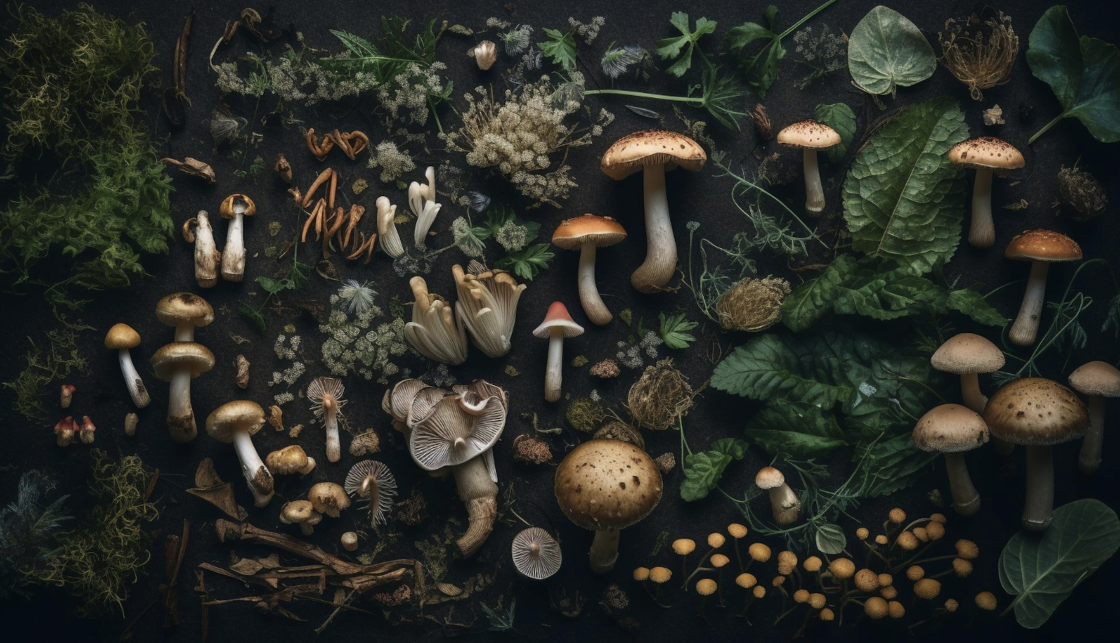Mushrooms, those intriguing members of the fungal kingdom, defy classification, standing apart from both plant and animal kingdoms. Their mysterious qualities have entranced humans for centuries. In this feature, we’ll explore how these unique organisms share more in common with us than with plants and delve into their rich historical connection to human evolution and culture.
An Unlikely Kinship – Mushrooms and Human Biology
A Shared Ancestry
What could humans possibly have in common with fungi? Surprisingly, a lot. Our genetic makeup bears a resemblance to that of fungi more than it does to plants. The common evolutionary path we share sheds light on why mushrooms breathe much like we do, absorbing oxygen and releasing carbon dioxide, unlike plants, which rely on photosynthesis.
The Breath of Life
The very process of respiration in mushrooms mirrors our own. This breath of life, the exchange of oxygen and carbon dioxide, makes their physiology oddly relatable, adding another dimension to our fascination with these organisms.
A Cornucopia of Wonders – Fascinating Facts about Mushrooms
A Diverse Kingdom
From the flavorful delicacies gracing our dishes to the lethal toxins that must be avoided, mushrooms exhibit a staggering diversity. Their adaptability to various habitats shows the resilience and innovation of the fungal kingdom.
Healing Powers
Historical records reveal the medicinal use of mushrooms in ancient cultures. From the wonder drug penicillin to modern cancer treatments, fungi continue to unlock powerful medical benefits, healing us in ways we’re still discovering.
Mind and Spirit
Psychoactive or “magic” mushrooms have played roles in spiritual rituals and cultural expressions. Their effects on human consciousness continue to captivate researchers, artists, and spiritual seekers alike.
History’s Tapestry – Mushrooms in Human History
An Ancient Connection
Mushrooms have been entwined with human history, from prehistoric diets to religious ceremonies. Their symbolic presence in art, literature, and folklore reveals a deep-rooted connection with the human psyche.
A Culinary Delight
The modern kitchen, too, celebrates mushrooms. Their unique flavors and textures have elevated culinary practices worldwide, making them a gourmet staple.
Evolving Together – Mushrooms and Human Evolution
Shaping Minds and Culture
Some theories suggest that early human consumption of certain mushrooms might have spurred cognitive development. Though debated, it’s an enthralling idea that adds to the mystique of mushrooms.
Guardians of the Ecosystem
Mushrooms’ symbiotic relationships with other organisms remind us of their vital role in maintaining environmental harmony. Their influence extends beyond our plates, stories, and medicines, shaping the very world we inhabit.
CLOSING THOUGHTS
Mushrooms, with their uncanny resemblance to human biology and profound impact on our history and evolution, continue to enchant and bewilder us. As we explore further, we unearth more questions than answers, leaving the world of fungi a mesmerizing enigma.
From their breathing, which resonates with our own, to their enduring presence in our culture, cuisine, and medical practices, mushrooms are far more than simple forest dwellers. They are complex beings, reflecting facets of ourselves and our shared existence. In their silent growth, they whisper tales of connection, innovation, and unexplored potential.
As we dine on their flavorful offerings, heal with their medicinal might, and explore their mysterious allure, let us celebrate the mystifying world of mushrooms and continue to learn from these fascinating organisms.


